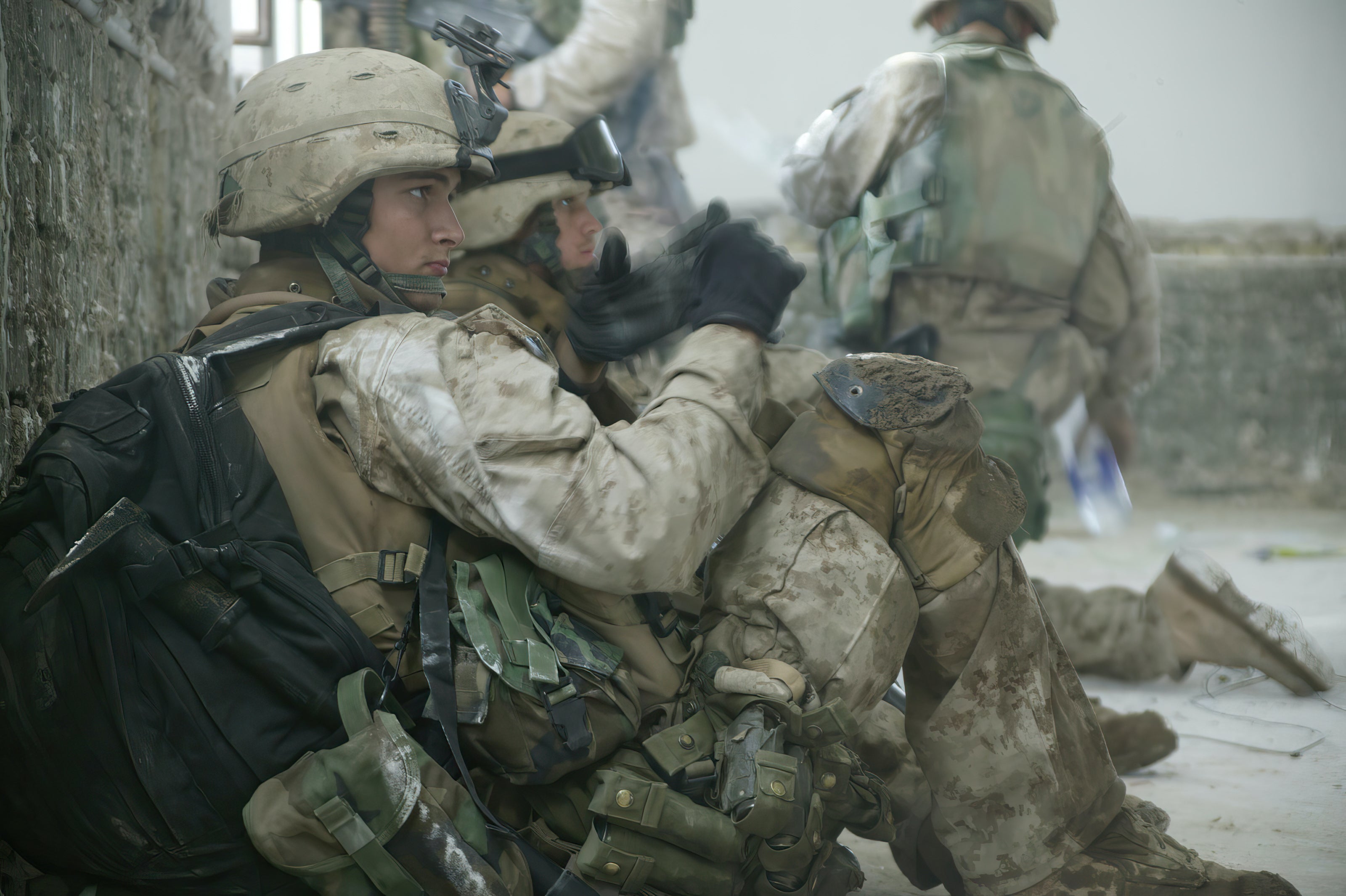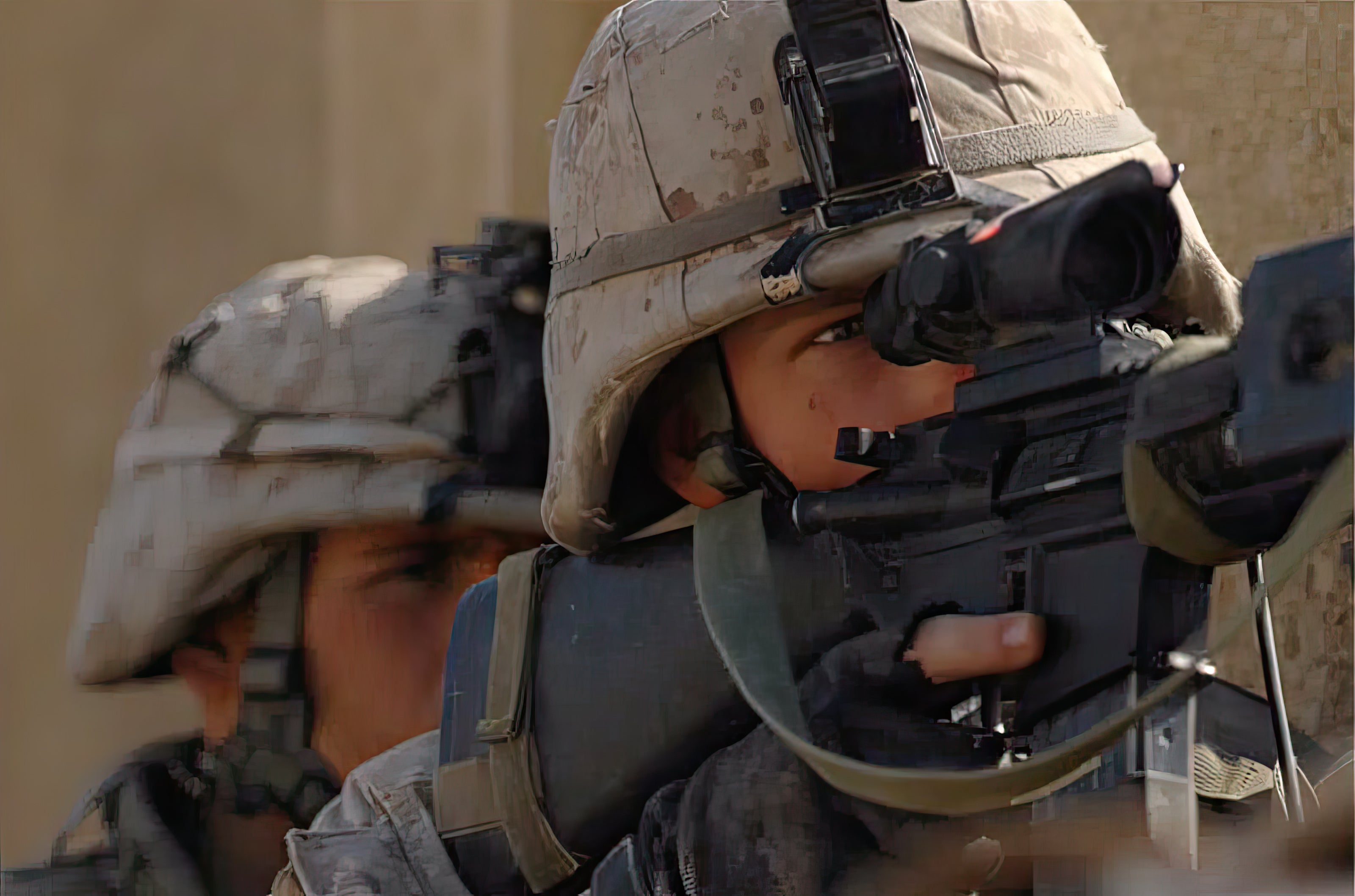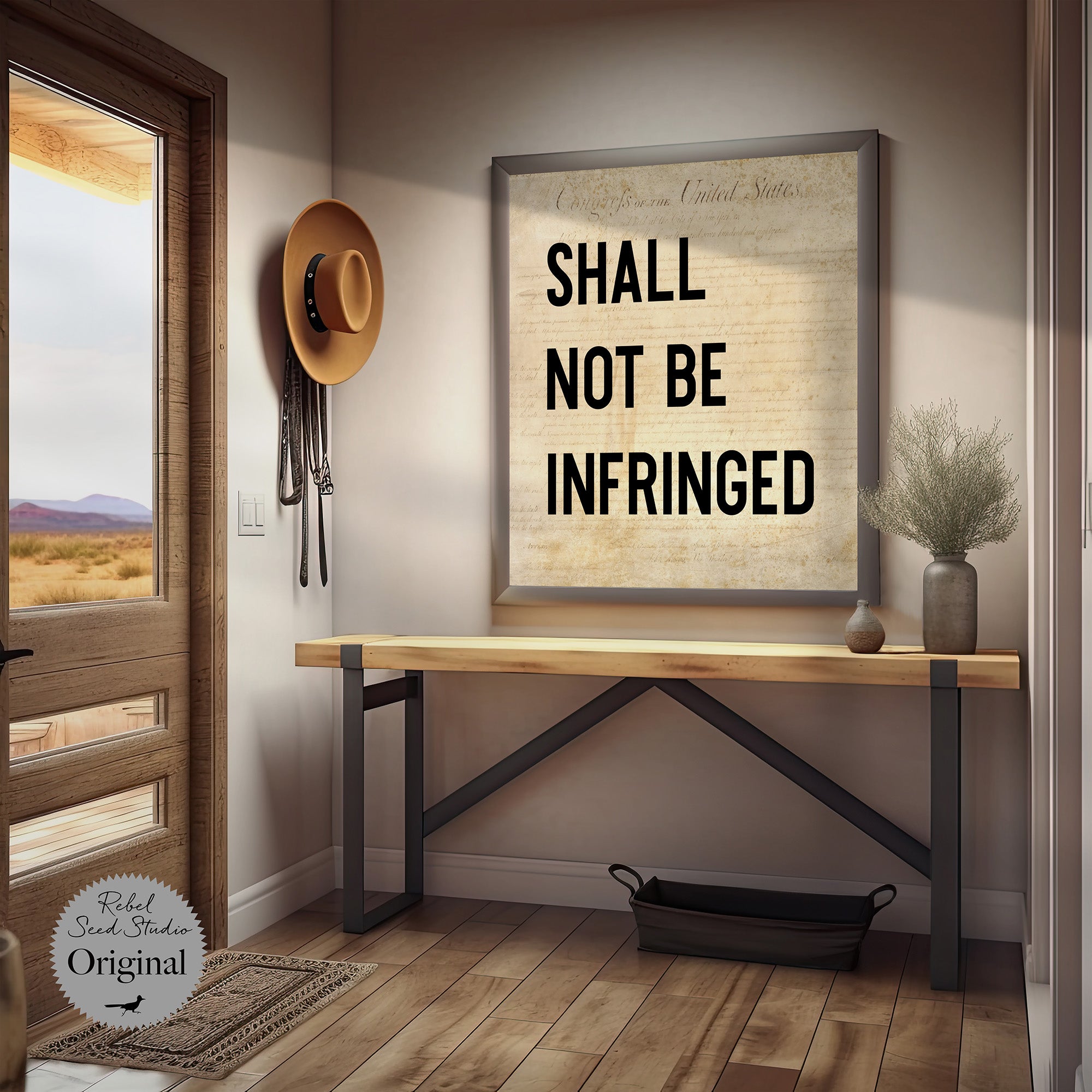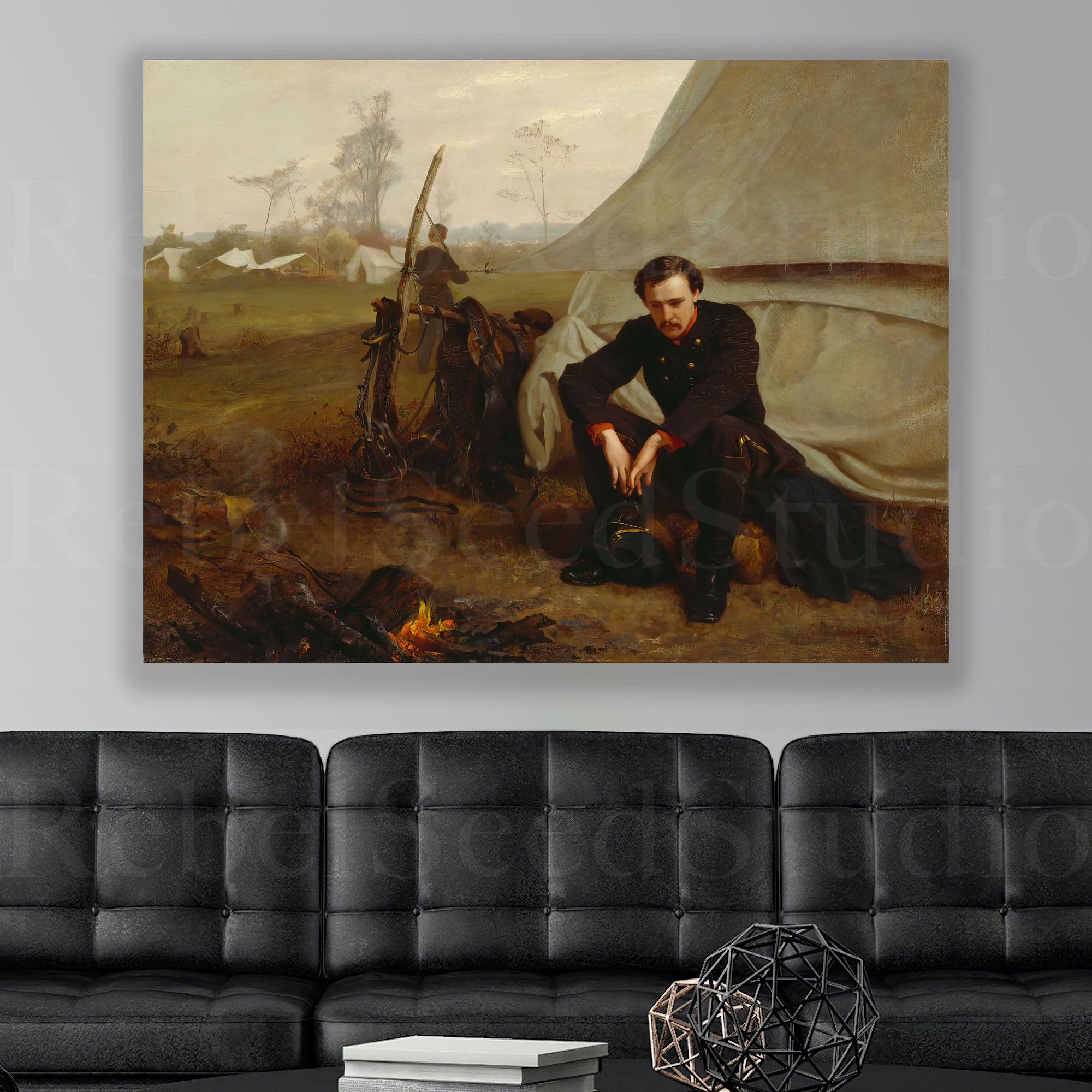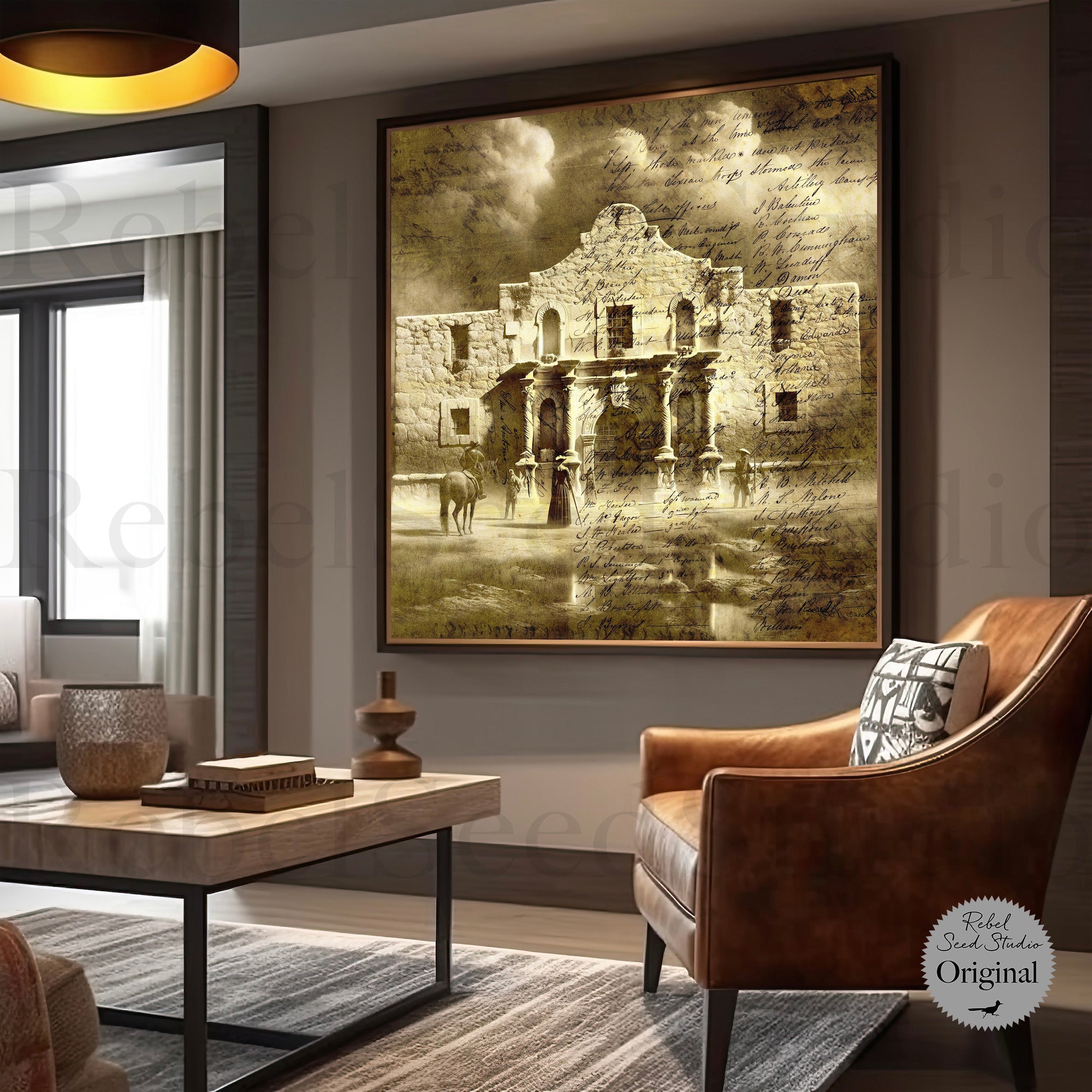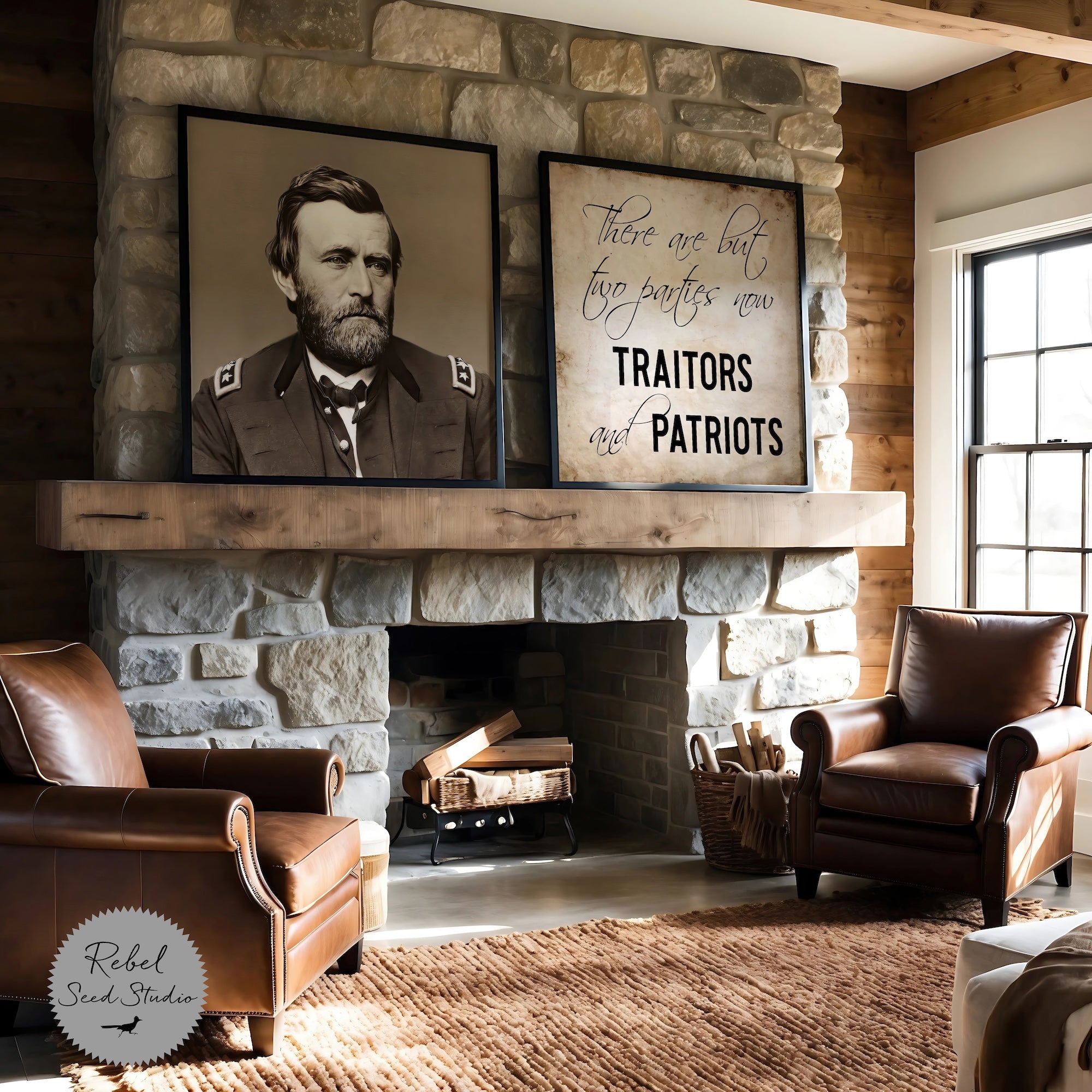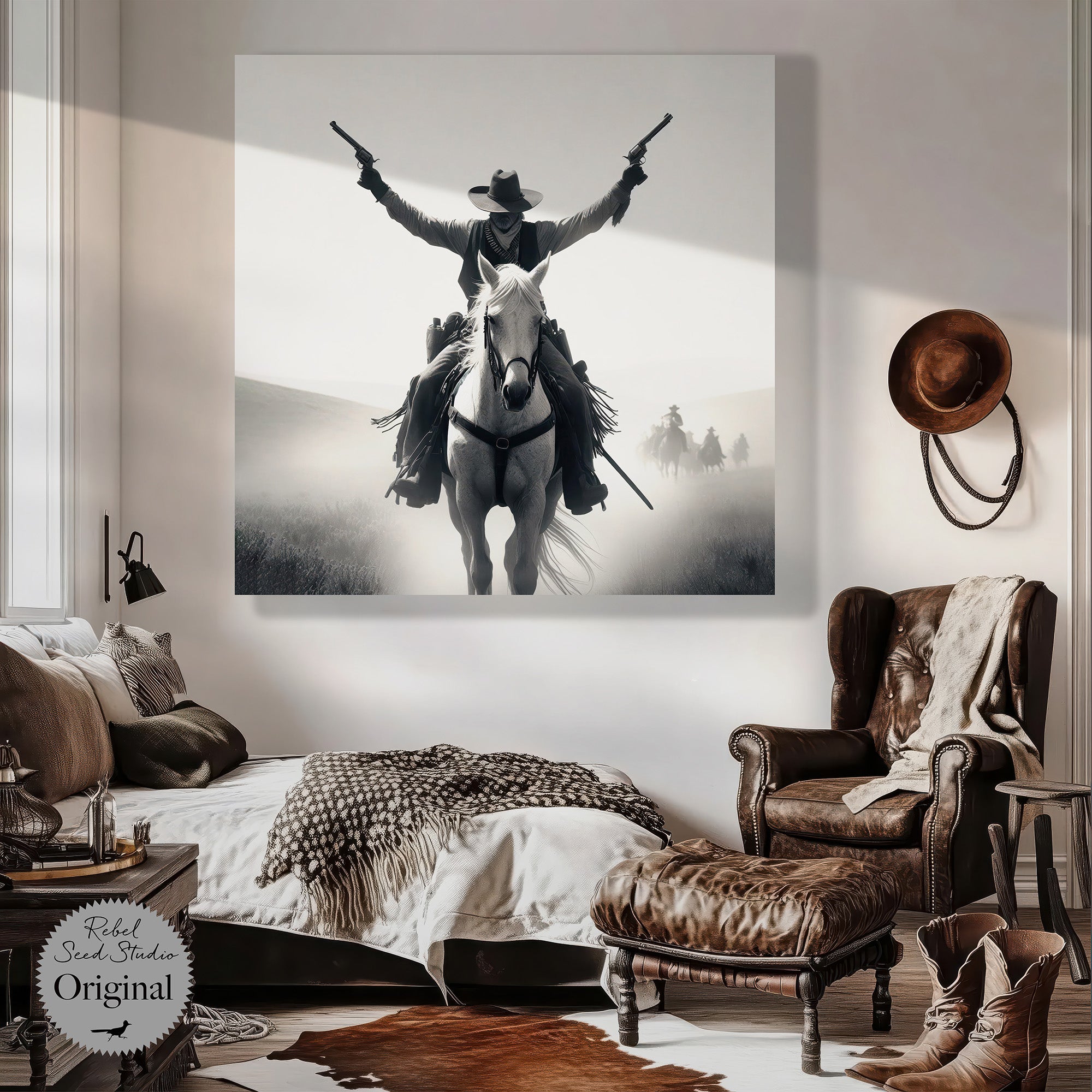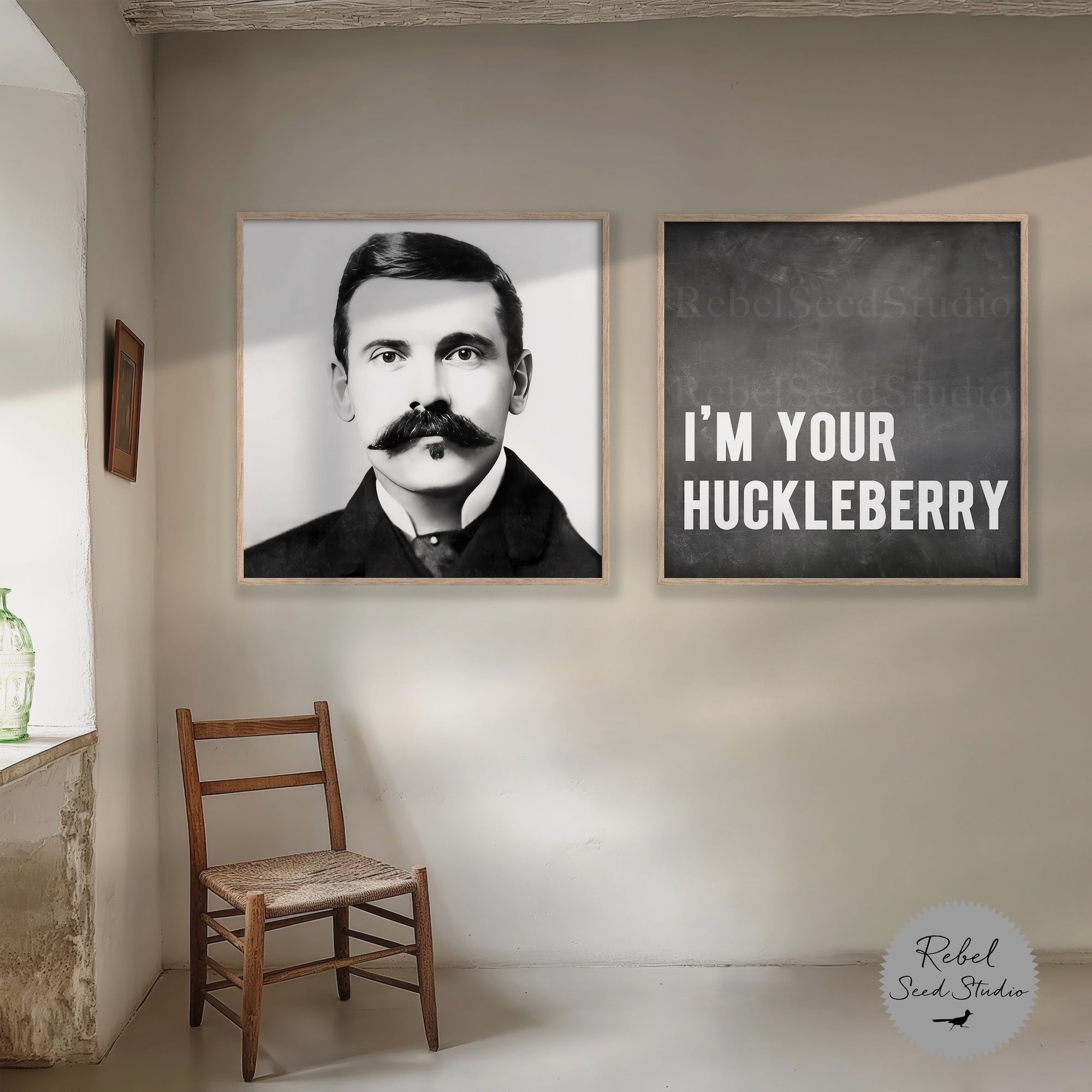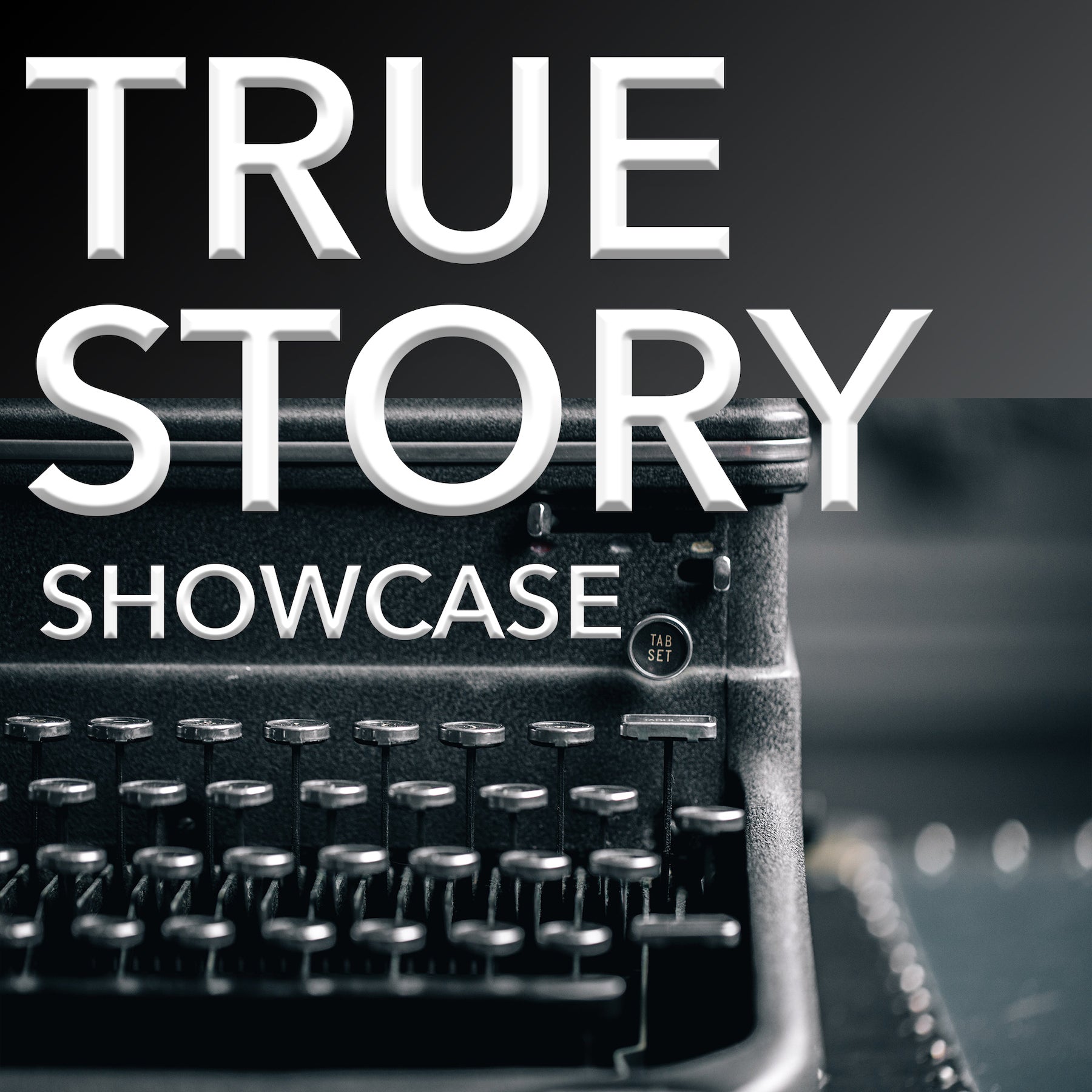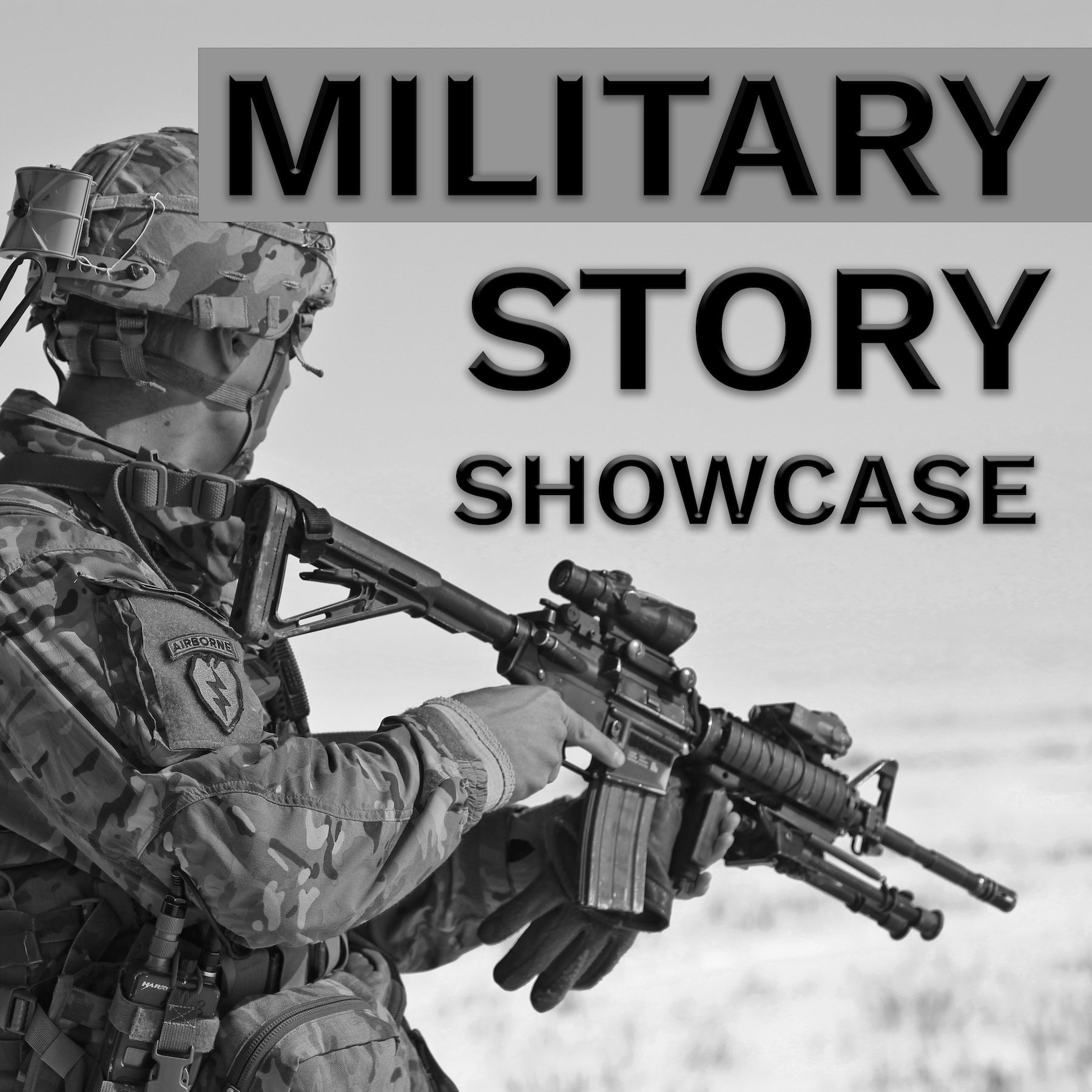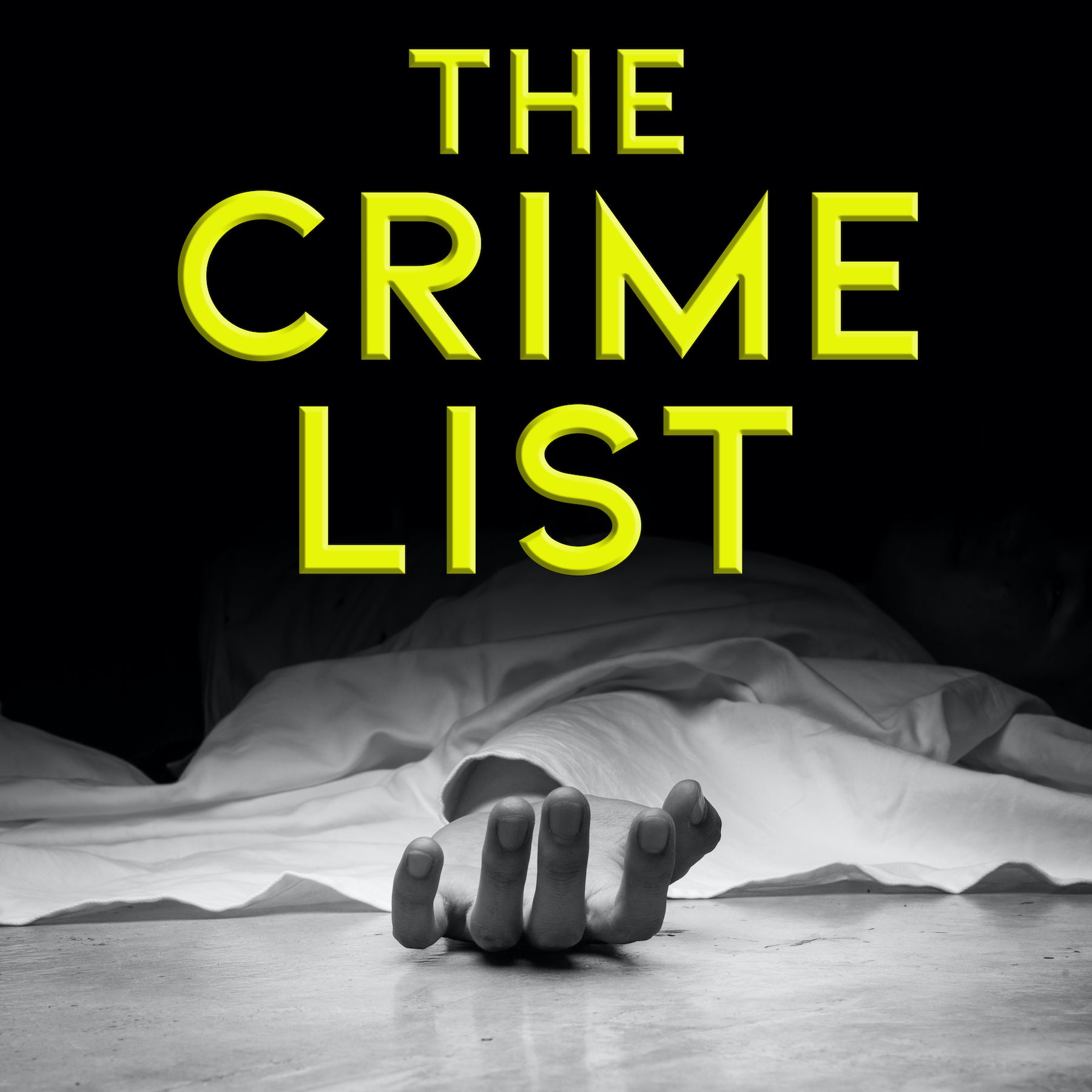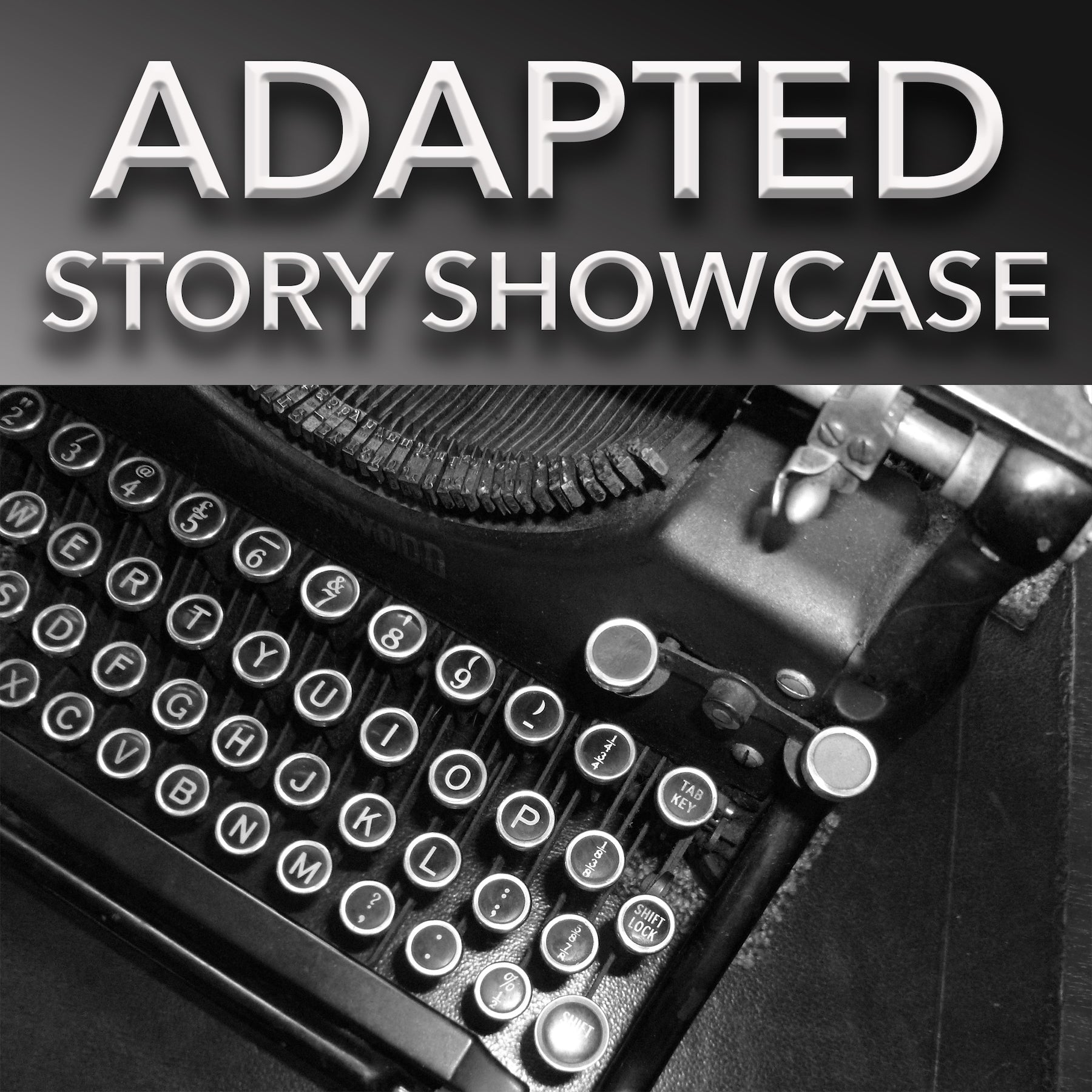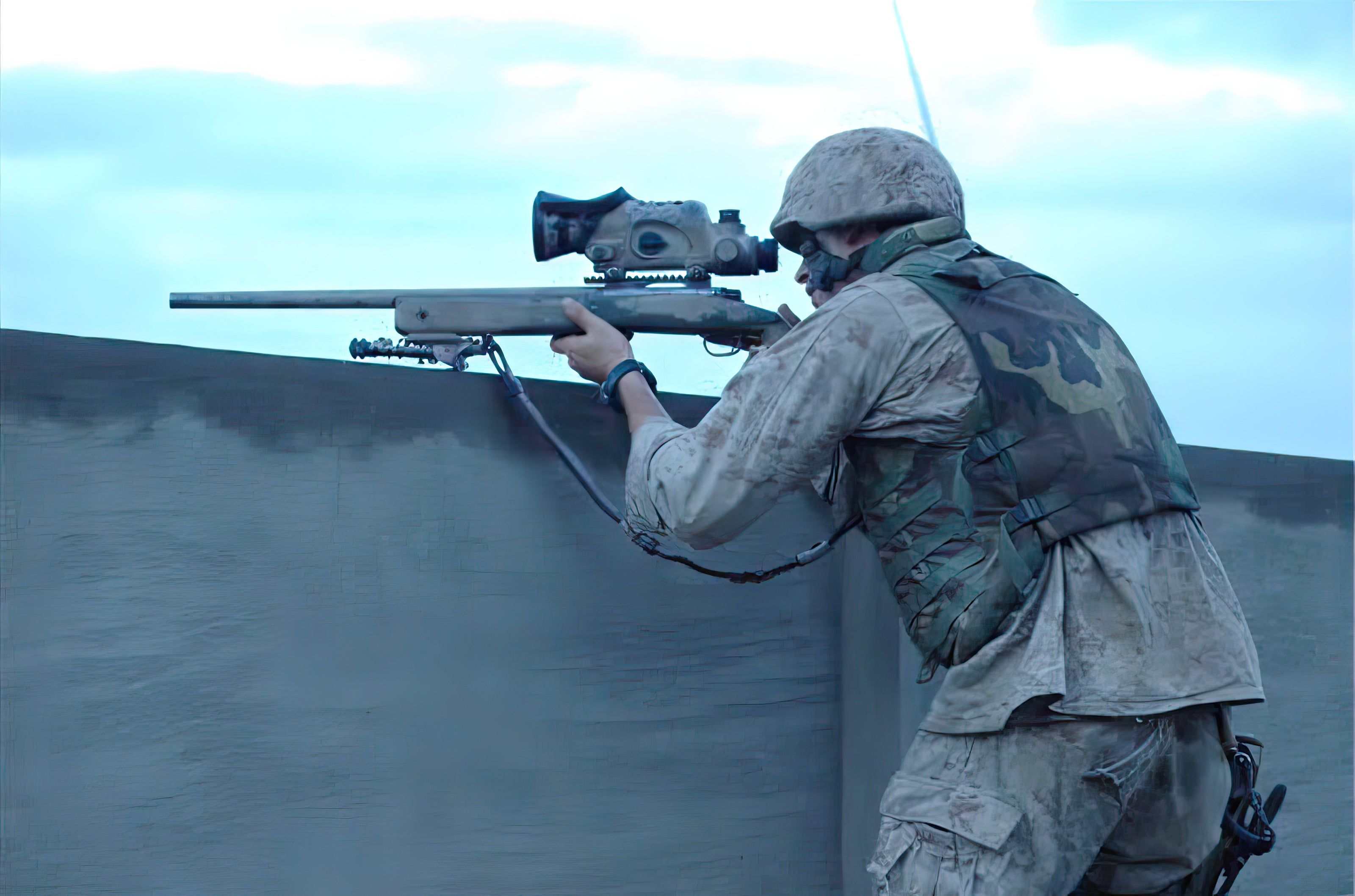
Battlefield Fallujah - Episode 11: Parting Shots (November 14 - December 23, 2004)
Marines and soldiers go back through the city to clear every house, and face tough resistance from hardcore insurgents who are prepared to die.
"General John Abizaid, the head of Central Command, paid a surprise visit to Marine Headquarters, Camp Fallujah today, getting an update from his senior U.S. commanders and Iraqi commanders on the progress in the street-to-street fighting in the city under siege. Commanders say that Marines and Iraqi forces have managed to get through all of the city but they're mopping up small areas, small pockets of terrorists who are inside using a lot of AK-47s and RPGs against the forces, street-to-street. Also using booby-trapped buildings. Some Marines dying in the fighting after going into certain buildings and then they were triggered to explode. General Abizaid also spending time visiting with some of the wounded Marines who are here getting treated at a local facility on base. So far, more than 250 U.S. forces have been wounded in this fight, and at least 31 killed. Six Iraqi forces have also been killed in the fighting, so far. As for the terrorists, there is still an estimated 400 or so inside the city but in very small pockets, according to commanders. They are also seeing a lot of activity in nearby Ramadi and may have to go there next. Traveling with the head of Central Command, General John Abizaid... Bret Bair, Fox News."
REGIMENTAL COMBAT TEAM 1
Colonel Shupp ordered 2-7 Cavalry to screen along Phase Line Henry, providing eastern flank security.
Lieutenant Colonel James Rainey 2-7 Commander: "The battle for Fallujah is no longer an issue. The multi-national forces and Iraqi Security Forces have clearly won the fight. There are, however, some small pockets of resistance remaining, particularly in the southern part of the city. Unfortunately, there's some terrorists there that want to die here, and there's a bunch of great young soldiers and Marines out there helping them self-actualize."
Colonel Shupp had 3/1 and 3/5 continue to clear buildings around their positions: "They’re doing the detailed house clearing and I’m realizing that the squeegee business was working, because we are still uncovering all sorts of caches in this northern area of the town."
He described the squeegee tactic as going over and over an area until everything is cleared out: "If you were to get a squeegee on a car when you wash your windows at a gas station, you could wipe it once, but there’s still water tracks on it. Now, we have to go through again and squeegee it again to go and clean this place. Constantly keep squeegee it until we cleaned everything out. So, now we’re going through second and third time. Now, we’re going sector by sector, district by district, by the numbered districts. Each district is numbered. We devised green, yellow, or red chart. Red means that it’s never been fought through initially. Yellow means that we’ve gone through it once or twice. Green means we’ve checked every building, every house. It’s certified. EOD’s gone through it. EOD has blown up the caches."
Lieutenant Colonel Willard Buhl, commanding officer, 3rd Battalion, 1st Marines: "It reminded me of what my buddies described from World War II in the Pacific, the mopping up, the Japanese diehards, holding out in bunkers and caves, and fighting to the death."
Lieutenant General John Sattler: "The enemy right now is broken into very small groups. They don't have eyes. They can't see outside, so they're isolated to where they are. And, they don't have communications, so they're not able to coordinate. So, they are truly broken into isolated pockets, which basically means, if they want to surrender, we are more than happy to accommodate. We have close to 1,000 military-aged males who have, in fact, surrendered that we have under our control right now. So, we are taking some surrenders. If they're trapped and they're cut off, and they're isolated and they want to fight to the death, we have no other choice but to accommodate 'em. But, as we stated on the front side, the perception of Fallujah being a safe haven for terrorists, that perception and the reality of it will be completely wiped off before the conclusion of this operation."
When necessary, artillery continued to put fire into structures.
CentCom Commander General John Abizaid, of the U.S. Army and the commander of all U.S. forces in Iraq: "When the Marines and the soldiers out there make a contact that they can't handle with the immediate tank support that they have or machine-gun support that they have, they turn to the artillery men to clear the way, and they've had some very, very good results. Yesterday they hit a target that they flattened on behalf of the Marines that killed a bunch of enemy fighters. And, so, they've been very effective. They also respond to incoming fires that threaten our forces."
Captain Michael Burgoyne, Battery A Commander, 3-82 Field Artillery: "In about 11 days, Sir, we've fired over 1,500 rounds in support of troops in contact and at enemy mortar rocket positions, Sir."
3rd Battalion, 1st Marines
The battalion systematically cleared in detail its entire sector, entering every single structure. The companies continued to run into pockets of insurgents who were determined to fight to the last. An infantry-tank-bulldozer tactic was developed that proved to be efficient. When insurgents were discovered, the infantry would seal off the building, tank main guns would blast it, and the D9 bulldozer reduced it to rubble.
Lieutenant General John Sattler: "The city has been seized. We have liberated the city of Fallujah. What's going on today both up in the north all the way down through the southern sector is, we continue security and clearing operations. So, what we've done is, where we've bypassed certain areas, in other words, the fighting didn't rage through those areas, but, we have to go back now and make sure that we clear each and every building. There are still isolated pockets of enemy resistance. The fighting for the soldiers and the Marines is very up close. It is mano-y-mano, face-to-face in some cases. We're still continuing to use our supporting arms, our great precision-guided munitions from the air and artillery, when, in fact, we can. And, we will not stop until we have gone back and cleared each and every building within the town to make sure that any die-hard insurgents or intimidators or terrorists that want to dig in and want to fight to the death, that they have been accommodated, and that we have cleared all of the ammunition, and the weapons, [and] the explosive bomb-making materials [used] for both individual explosives and then rigging cars for explosives."
On November 17, Kilo Company cleared south from Phase Line Grace to Phase Line Isabel, India Company from Phase Line Heather to Phase Line Isabel, and Lima Company from Phase Line Henry to Isabel. They discovered small groups of insurgents, but the new tactics succeeded in eliminating them without excessive Marine casualties.
Lance Corporal Justin Boswood, Kilo Company: "We went through and finished pushing all the way through our sector of the Jolan, the next couple days. Only run into, really, one more big house that was a pocket of resistance. It was the last house we were gonna clear that day. And, for some reason, we didn’t frag it. And, we should’ve known that something was different about it, because when we’d run up, the whole house was black and there was curtains on the windows and shit covering the windows. I don’t know, we just, for some reason, nothing clicked. And when we entered the house, initially, there’s nothing and there was just furniture pushed up against the windows and doors and we’re like, ‘What the hell’s going on here?’ But, we were just kinda like, 'We’ve been doing this for days, you know, 12, 13 days straight. This is our last house to clear tonight. We get to get some chow, maybe, if we’re lucky, two or three hours of sleep.' So, we just started going through, searching the house.
I was gonna open up this door ‘cause I was always going in one man as point, and our buddy Dane [Shaffer], he’s a SAW gunner, and he was like, ‘Hey, Boz, why don’t you let me go in first?’ And I said, ‘All right, man. No problem.' You know? He took a knee and put his hand on the knob and turned it and stuck his head in the door. When he threw his head in the door that RPD that was trained on the door, just started going off. There was three foreign fighters in there. I think they were Chechens. They had the RPD trained on the door, armed with AKs. Armed to the teeth with chest rigs, Russian grenades, Chinese grenades. The first burst went off to the RPD and Dane kind of fought back out and he grabbed his SAW and shoved it in the room and started firing just from his right hand. And, he let off one burst before he took a round in his arm, in his right arm, right through the bicep, and then he fired off two more bursts, dropped his SAW and got up. And I was right behind him, but I couldn’t get in ‘cause he was kneeling in the doorway, so there was really no where to go. As he got up and come out and he’s holding his arm, he’s like, ‘Damnit!’ He's like, ‘Grab my SAW. I let my SAW stay in there.’ And he run out towards the front door and we had to move a couch out of the way so we could get out through the front door and he run out.
While he was running out, the rest of the squad opened fire from the room into the room where the insurgents were, just started hosing it with 556 rounds. A couple grenades went off in there. We decided we’d pull out of the house. Our squad leader wasn’t in there. It was my self and Lance Corporal Perez and we were the senior men in there, and we decided we’d just pull out of the house, that there was no sense in trying to go toe to toe with these guys in the house. So, we started pulling back and pushing everybody outside.
There was probably six to eight insurgents in there, ‘cause they started running up on the roof. They had a PKC that they were trying to get up on the roof to wait for us to come out, but they didn’t know that we had Lima Company in over watch positions to our backside with some 240 Golfs and about 10, 12 pissed off Marines. And as they were running up on the roof, they were just getting cut down. As we pulled out of the house, there’s this guy dropped off the roof. I remember thinking, ‘Man, that son-of-a-bitch is crazy. He’s willing to jump off the second story roof, just to come at some Marines. This is pretty wild.’ So, I put a couple in him just to make sure he was finished, and we pulled out.
We had friendly forces just totally surrounded the house and everybody’s trying to get theirs. Couldn’t really figure out what we were gonna do to the house. We had it all sectioned off. We knew we weren’t gonna pump any bodies in there needlessly. It was just so hard to win against insurgents inside the house, especially one that’s fortified, as that one was. So, they called up the D9, armored bulldozer, and we decided we were gonna push in and just push this house over on top of ‘em, which was probably the greatest idea. And that thing come up with its little back up beep to it and pushed over the gate to the courtyard and then it went through and just started leveling this house. None of the insurgents run out. The ones that were left in there, that weren’t dead, were the ones that hadn’t gone up on the roof, were buried underneath the rubble. It was pretty cool just thinking that the last thing they heard was the methodical beep to a dozer. It was a pretty good finishing point for ‘em.
And that's probably the biggest thing that we learned was that, damn, you just can’t really compete with people that are fortified into a house. You got to find some other means, if you can, to minimize the threat and take it out. So, that really changed our TTPs within our squad and our platoon, as far as assaulting houses. When we took contact, we were now just gonna pull back from the house and hit it with a rocket or dozer. We didn’t want to see any more of our Marine brothers get shot or wounded."
The next day, the three companies advanced to Phase Line Jenna. As the terrain opened, they massed fires with direct fire from tank main guns, missiles, and vehicle gun systems.
Lieutenant Colonel Buhl: "Lima Company found a very large room packed full of all kinds of medical supplies. The date of that I can remember, because poor Lance Corporal (Luis) Figueroa was killed by a man who ran into the neighboring house and that was on the 18th of November, and ran into the house next door to this thing, and they pursued him inside and he shot Figueroa in the face. And then [shot] an Iraqi in the chest above his SAPI plate, who followed him, who died, shortly thereafter. Figueroa was killed instantly. We got them out of the house, and we blew the house down on the top of this guy inside."
At the end of the day, Lima Company was relocated to the Fallujah flour factory to prepare for the return of the city’s residents. On November 19, India Company launched an attack west through the Nazal District of south Fallujah to eliminate the insurgents who had consolidated in the area to escape the converging Marine forces. India Company, re-designated Task Force Raider, was reinforced with tanks, AAVs, a Combined Anti-Armor Team, Force Reconnaissance teams, and D9 bulldozers. The battalion noted, “During this period, India Company took the majority of its losses from foreign fighters that were trapped, desperate and in well-fortified positions inside houses.” After clearing the last remaining portion of the battalion’s battle space and eliminating the insurgents, the company established strong points and a company forward-operations base on the edge of the Euphrates.
Lance Corporal Justin Boswood, Kilo Company, explained the daily routine: "Just every house in the whole district, just door-to-door... probably five to six hours in the morning and then three or four in the evening. Everything that was there, was destroyed. All the way from Phase Line Henry to the Euphrates River and from Michigan down to Queens, which was our company’s AO where they broke ‘em down, was leveled and destroyed. Every two-story building, we leveled with C-4 and propane tanks, that we found, if we drug enough of them in, made quite an impressive show. Probably spent, hell, three or four weeks, house to house, every day, clearing ‘em out. Then, at night, running security patrols in a dead city. There was nobody in the city. After the initial push, and we started clearing in zone, we didn’t see anybody until we left in January, we didn’t see a single person. The city was so covered with Marines and Iraqi soldiers that I don’t think anybody could get in. Every house was just blackened by fire and the destruction was awesome. OPs at night, going out with STA platoon and snipers, set up and watched people cross the river and tried to get into the city, which was never successful because nobody tried to come in."
Lieutenant General John Sattler: "Civilians are almost non-existent on the street. There's about 300 that we have in a mosque where they gathered. Those were picked up by the Iraqi Security Forces. The Iraqi warriors spoke to them in their language and calmed them down, and we have them and they're receiving humanitarian aid. They're being well cared for. A handful of families, possibly up to 30 up on the northern side of the town [came out], and another 30 came out through the southern side [consisting] of women and children that we were able to accommodate and move to safe areas. One of the commanders best phrased it as, 'It's almost like a science-fiction movie.' The town is eerily quiet. There's no one on the streets. When someone does break-and-run on the street, it is normally an enemy warrior and he has to deal with our sniper fire, our artillery, our mortars, our tanks, our warriors."
2nd Battalion, 7th Cavalry
Lieutenant Colonel Rainey received orders to support 3/1’s clearing operations: "As we move through the city and conduct more detailed clearance of the homes and Iraqi Security Forces going into the mosques, specifically, there's just huge stockpiles of ammunition of all types, weapons, fake identification, and other terrorist-type activities."
At this point, 2-7 Cavalry controlled Phase Line Henry all the way from the train station to the southern outskirts of the city. Rainey was mostly concerned with insurgents who slipped through the seam between Charlie 2-7 and RCT-7.
Lieutenant Colonel Rainey described the small pockets of remaining resistance: "From what I've seen, and as far as Task Force 2-7 and the units around us, there are small groups that are remaining in place intent on dying there and trying to inflict whatever casualties they can on multi-national and Iraqi Security Forces. I would not call them coordinated. I don't believe they have the ability to counter-attack, and we haven't seen any movement of them within the city, although there have been some that have been trying to flee the city."
With the assault phase over, 2-7’s heavy armor was no longer needed. Rainey recalled that “On the night of November 19, we were told that the Marines had it under control from there and they released us to get back in the fight with the 1st Cavalry Division.” One of the last casualties the battalion suffered was Sergeant Jonathan Shields, a tank gunner with Charlie Company 3-8 Cavalry. He took over as a replacement tank commander when the other was wounded. The sleeve of the tank’s main gun had taken shrapnel, so Shields volunteered to take it for repairs. “As Shields and Specialist Troy Caicedo were taking it back,” Captain Glass reported, “the tank fell into a deep hole on the side of the road, flipped over and crushed Shields. Caicedo managed to escape.”
3rd Battalion, 5th Marines
3/5 continued to work its way through the hundreds of buildings in its zone. The battalion captured several detainees and discovered 16 weapons caches. Fallujah was in ruins and strewn with the bodies of murdered civilian Iraqis.
Major Marshall Bourgeois, Kilo Company: "The city is a walking, festering sore. It’s just disgusting. It’s not just the damage that we did,it’s trash, it’s, dead things. It’s, I guess, it’s just the way they chose to live. I got up at 0600, brushed my teeth on top of the roof looking at the sunrise, went to go spit over the side of the building, and I see six Iraqi bodies just laying in the courtyard next to me just all blown to heck. One of the Schwanis went by and checked, and he said some of their throats had been cut. So, which would indicate they were executed. This was before we got there obviously. And then, there was another room in the adjacent building that had six more Iraqis that were just piled like cord wood that had been dead obviously a while, the stench was just horrendous. Maggots all throughout their faces and stuff. So, that would indicate that they’d been there a little while."
Lima Company found a second execution chamber that contained the body of a woman with her legs and arms cut off and her throat slit. At the time, it was believed, incorrectly, that it was the body of a murdered CARE worker named Margaret Hassan.
The discovery, and the impact of the battle on the Marines, affected Major Bourgeois: "Lima Company had found another execution chamber they thought, along with a body, that turned out to be was the murdered care worker. The whole time I was doing this, I felt like I was in an ozone... gamut of emotions. I don’t know how to feel about the Marines.... try to keep your composure together as you—it’s really easy to focus on what you’re doing at the time; whether it be treating a Marine, shooting your weapon, or you’re moving to a new area, or you’re clearing a house, or whatever, but after you see some Marines get hurt to the extent that I saw, and some of these other men that I saw that, you know, never should ah, should see. It was hard."
Major Bourgeois saw some good things, too, noting that Marines would often care for the stray dogs roaming Fallujah: "I saw some good things. Like I said, some animals, little puppies running around, chasing these guys. A couple of them came back with Marines back to their areas so they can care for them, feed ‘em."
As the battalion fought through the city, the importance of tanks was brought home time after time.
Executive Officer Major Todd Desgrossielliers: "The times where we had Marines killed, was when we were going through a door. We decided that tanks are our friends. We’re gonna drive through the wall. We’re gonna shoot a SMAW through the wall, and we’re gonna get in through our own hole. Or we’re gonna blow the door off the hinges, or we’re gonna gain access to the building in our own way that’s gonna be dynamic. It’s gonna put ‘em down, so that we can get in there and shoot ‘em."
Major Bourgeois: "We prepped fire with artillery and prepped fire with mortars, 50 cals, tank—main tank guns, 240 Golf, everything that we had at our arsenal we prepped fired it—the area in front of us to keep these guys that are staying in these houses from surprising us as we made entry into the home."
REGIMENTAL COMBAT TEAM 7
1st Battalion, 8th Marines
Lieutenant Colonel Brandl was concerned that as 2-2 Infantry pushed through the industrial area, the enemy would move into 1/8’s zone. Brandl explained, “We did see some leakers coming in, and they were primarily foreign fighters, the hardcore guys... So, I told my company commanders, we would use maneuver in support of fire. We leveraged our technology, our indirect fires, our aircraft, the AC-130s... and fought to areas where we could control or dominate the terrain... high buildings.” Brandl’s intent was to draw the enemy out, pinpoint them, and destroy them before moving against them. “We destroyed large groups of enemy. I didn’t have the companies driving headlong into them. This was not to say that we didn’t come close, face to face.”
Alpha Company was moving so rapidly, tactically, they couldn't search all the houses. Instead, they focused on those designated as cache sites. On November 14, Alpha Company located an important cache.
1st. Lt. John Flanagan: "By this time, we had realized that one of the TTPs that the enemy was using to designate their cache sites was - what they would do is they would take a cinder block or some sort of brick [or] large boulder, tie a wire around it and hang it over the sides of the building or the house that they could designate as cache sites. So, we started to locate these houses as we were moving south and breach those doors. The tactical movement was so rapid we weren't able to go house to house.
So, we were going after these houses primarily that had these stones hanging off the sides, and we were finding a large amount of cache sites. The very first one we found was an IED-making factory. It had five to eight individuals who had been residing in there. It was empty when we breached the door and entered, but looking over the open food containers and cigarettes, some of the load-bearing vests were actually left in place. Some of the guys had left their IDs [and] communications devices. There was a large stockpile of food and ordnance everywhere, primarily mortar rounds of different types.
As an Arabic linguist, one of my jobs is not only to translate for the CO but - at the time, I was doing sensitive site exploitation, as we call it. So, I was going carefully through their bags that each individual was living out of, checking the Arabic documents that were inside, finding a lot of Mujahideen documentation and just exploiting the materials that were inside those bags, which we ended up loading onto a trac and took that back to the rear. I had four duffel bags full of enemy documentation, and it was just outstanding intelligence. Some of the manuals included hand-typed manuals, which were not mass reproduced, [such as] how to shoot mortars, that coincided with the 60 mm mortar tubes that were in the house along with the shells. The majority of the documentation that I was finding was from the Zarqawi network. It had Zarqawi's emblem on the books.
Again, they're not mass reproduced. So, somebody actually painstakingly sits down and types up these documents. And, these manuals also showed what their TTPs were for setting up ambushes and attacking our force, as well as our strongpoints... airfields, attack positions, assembly areas, when to employ 120 mm mortars, where they would stage 60 mm mortars, basically how they would conduct indirect fires on our positions and ambush us as well. So, it was a really good find."
Bravo Company also found a large cache that day.
1st Lt. Flanagan: "Bravo Company found such a large cache they had to bring in a seven-ton with a trailer, which they filled up entirely from one house alone that evening. That, also, was transported back to the rear."
One of 1st Lt. Flanagan's tasks was searching the bodies of the dead insurgents, he noted the precision fire the Marines delivered on the terrorists: "The precision of fires that our Marines were able to unleash on the enemy, it was truly 'one shot, one kill'. Doing my site exploitation, I also have to search these guys after they're killed for documents, IDs, [to] understand who these guys are, also to designate the foreign fighters. Bodies weren't riddled with bullets. They were definitely one shot, one kill. Marines engaging with the enemy with AQ rounds with their [M]203s, it's just precision of fires in such a tight-knit space."
Charlie Company continued to clear high-rise buildings around the Mayor’s Complex. They made extensive use of their attached engineers to breach doors, and also found Iraqi civilians who needed help.
Company Commander Captain Theodore Bethea: "The operation was to continue to attack to clear high-rise buildings to our immediate eastern flank. Once again, these are ideal sniper positions. And, once again, the engineers were a pivotal asset. Without engineers conducting explosive breaches, I would have been unable to make entry into these buildings and clear them. Inside the buildings we found Iraqis who were scared, holed up, and who were seeking some means of assistance. And so we directed them on where to go so they could get food and water, and then continued to clear in zone."
The company took the civilians into custody and, after screening, handed them off to regiment for further processing. Brandl noted that “in the southern edge of my sector, and a little bit in the north, there are more and more families coming... but its not nearly the civilian population that the city once had. For the most part, the city in our area is deserted.” While clearing structures, the battalion was finding numerous, large weapons caches.
1st Lt. Christopher Connor, Charlie Company Executive Officer: "So, we started finding weapons caches, huge weapons caches. These guys had 120 mm mortars, 60 mm mortars, 106 rounds, 155 rounds, just sitting in their basements or their rooms, and AK-47s, [and] other various-type of assault rifles. We found a 50-caliber heavy machine gun. What is a guy doing with a 50-caliber heavy machine gun? We're picking up a lot of intelligence as well. We found CDs directly linked to Zarqawi and al Quada. We found the cell phone and some other documents that belonged to one of those Blackwater individuals that were murdered. The weapons caches that we've found, up to this point, could of ran the insurgency for years and years."
2nd Battalion, 2nd Infantry
The night action on November 14th took the fight out of the insurgents. Newell said. “I think we destroyed any remnant of organized resistance. After that, the only guys we ran across were the ones that weren’t smart enough to get out or couldn’t.” The battalion started detailed clearing of its sector, “building to building and room to room.” As the soldiers cleared a building, the IIF came in behind them. Captain Emery remembered, “We probably spent three days going through every part of the industrial area, breaking open every lock, opening every shop and tearing stuff apart. We found a lot of IED factories, and a lot of anti-aircraft weapons, machine guns, missiles and mortars—you name it, we found it.” Major Doug Walter’s Alpha Company 2-2 Infantry found a house that had 15 IEDs radiating out from one central location. Luckily the insurgent was killed before he could detonate them.
Lieutenant General John Sattler discussed the need to search structures and remove all explosives to render the city safe for citizens to return: "There have been some vehicle-borne improvised explosive devices but, based on the rules that were put out by the Prime Minister that all vehicles will be considered hostile, there have been no Iraqi citizens driving vehicles through the town of Fallujah. Therefore, when the Marines or the soldiers come across a vehicle, it's on the street and it looks nefarious, they can engage it. And, we have done that and we've had some tremendous, what we call, secondary explosions from explosives inside some of those vehicles. We are running into some booby-trapped buildings, some with improvised explosive devices, some detonated by tripwires. We're not sure if some of them are command detonated by an observer down the road. We're being cautious and thorough as we clear every building. All those explosives have to be removed before we can let the people of Fallujah come back into reoccupy their home."
1st Battalion, 3rd Marines
Ramos’s battalion continued to find small groups of die-hard enemy waiting in the houses. The challenge Lieutenant Colonel Heindenreich pointed out was that noncombatants were in some of the houses. This placed the Marines in a dilemma, not knowing whether there were going to be civilians or enemy in the house. The battalion discovered that along the streets that ran north and south, the houses all had little gated, walled patios. “Almost every one of them,” Heindenreich recalled, “had RPGs and grenades prepositioned at those gates. The insurgents would use them and then fall back to the next patio and engage again.” Lieutenant Colonel Heindenreich was of the opinion that “As more and more of the city was cleared, the insurgents realized they couldn’t go face to face with us. They wanted to intermingle with the civilians once they started coming back into the city... to either escape or to continue insurgency attacks.”
While clearing houses, an American advisor to the Iraqi Forces was killed.
Captain Brian Mulvihill: "One of the IAF companies had an advisor killed. [He was a] Staff Sergeant in the Army. They were clearing a building, top down. There was a body on the stairs. Staff Sergeant went to get by. The guy was playing dead. He rolled over and shot him in the head. The guys behind him killed that guy. But he [the advisor] ... he died instantly."
In early December, RCT-7 and 1/8 pulled out of the city, leaving 1/3 to be assigned to the tactical control of RCT-1. Lieutenant Bobo recalled, “The first thing we did was clear the zone south of PL Fran, which took eight or nine days. There were some pretty sizeable engagements with about 30 to 40 insurgents . . . diehard fighters at this point.” The battalion had all three companies on line and cleared every house in the zone before the residents returned to the city.
DECEMBER HITS
By mid-morning on December 12, 3/5’s Task Force Bruno had already cleared several buildings in the Askari neighborhood and uncovered large amounts of weapons and unexploded ordnance. One of Major Desgrossielliers' search teams had just entered a two-story house when several insurgents opened fire, mortally wounding several, including Sgt. Jeffrey Kirk. At the sound of the firing, Desgrossielliers grabbed several men and ran over to the house. As he prepared to lead them inside, an insurgent hand grenade landed at his feet. The Silver Star citation noted: “With complete disregard for his own safety, Major Desgrossielliers shielded them from the explosion with his own body.” Briefly knocked unconscious from the blast, he shook it off and regrouped.
An unidentified Marine on the scene said about Desgrossielliers: "Showed up on the scene, and he was out there with [Task Force] Bruno, and there was a couple of other Marines there. A lieutenant running around with his 9 mil. [They] had to go in the house and get ‘em out. And so, he grabbed ‘em up, and lead ‘em inside, and got ‘em out. Heavy - there’s about 30 guys in the buildings, with AKs, and everything else - machine guns firing back. He didn’t wait for the tanks ‘cause you had to get the guys out."
As Desgrossielliers rallied his men, Corporal Jason Clairday “jumped a four-foot gap three stories up onto the roof of the enemy stronghold,” as noted in the Navy Cross citation, “[and] after throwing several hand grenades fiercely led the attack into the house.” He was immediately wounded in both legs but managed to pull himself out of the kill zone. “Without regard for his own wounds, he rejoined his own squad and entered the house a second time. Once inside, he took control of the stack and repositioned himself in the front while suppressing the enemy using fragmentation grenades and his rifle.” As he led his men into a room, he was mortally wounded. In the meantime, Desgrossielliers “ignored his own wounds... and directed grenade, heavy machine gun and tank fire to destroy the 15 insurgents in the house.”
Major Desgrossielliers: "Anybody else in the same situation would have done the same thing. That was a good fight. And, they’re all dead. Every insurgent in that house is dead. I know it was 10 or 15 different guys that I saw that day. But they didn’t live to see sunset."
On December 23, a search team from Lt. Alfred Butler’s 81mm mortar platoon came under fire and was trapped inside a four-story building in the city’s northeast. Three Marines were mortally wounded and another immobilized with a wound.
After hearing a call for help, Major Desgrossielliers sped to the scene: "I was just a little bit west of there. I linked back up with them."
Reflecting on the event, he said, "I had a bad feeling. I wanted to protect my Marines and kill the enemy... in that order." He led a party into the house but failed to reach the upper floors of the building. As the Major pulled his Marines out of the ground floor, he was wounded by shrapnel in the leg. Two squads of mortar men under Sgt. Jarrett Kraft and Cpl. Jeremiah Workman were close by. “I was across the street,” Workman said, “on the second story of another house when I heard the automatic fire. I grabbed my guys and ran across the street to link up with Sergeant Kraft.”
The two NCOs ran inside the house. “The stairway went up, with a small landing halfway up, then the opposite direction to the top. At the top, there was another small alcove connecting to three bedrooms, with a rooftop patio straight ahead.” They found six Marines pinned down against the wall on the second floor. “There was heavy machine gun fire coming through the door, and grenades flying both ways,” Kraft recalled. “Then a grenade went off... when it exploded it killed one of my Marines and threw me backwards down a staircase.” Kraft was also wounded in the right leg, ankle, and torso. “I didn’t notice that I was bleeding,” he said. “I guess because of the adrenaline.”
Briefly knocked unconscious, Kraft came to and joined Workman, Lt. Sam Rosales, and other Marines for another assault up the stairs. “Somehow I managed to be the number one man going up the stairs each time,” Workman said, “with Lieutenant Rosales behind me and Kraft behind him.” On the count of three, he ran up the stairs. “I was thinking the whole time, ‘This isn’t going to last that long.’” He got halfway up and discovered that he was alone. Faced with overwhelming enemy fire, he, “Superman-like dove back down [the stairs].” The men regrouped and went back up. Workman’s Navy Cross citation noted that he “again exposed himself to enemy fire while providing cover fire for the team when an enemy grenade exploded directly in front of him, causing shrapnel wounds to his arms and legs.” Workman remembered, “It was yellow! Something I’d never seen before... this one was homemade, a hollowed-out metal ball filled with gasoline. It went off and kinda knocked us down the stairs.”
While the men inside the house were trying to rescue those trapped, Lieutenant Butler and Sgt. Samuel Guardiola used adjacent rooftops to reach the men on the second floor. Butler “shielded the bodies of the fallen Marines when a grenade landed nearby,” according to the Bronze Star citation, “and then threw two grenades into a room filled with insurgents. While delivering cover fire, he moved the men across to an adjacent rooftop, personally evacuating a wounded Marine under constant small arms fire..." Sergeant Guardiola’s Silver Star citation explained, “As the enemy assaulted with a fragmentation grenade, he covered the Marines with his own body... despite intense enemy fire, he carried one fallen Marine down three flights of stairs, clearing rooms along the way with his 9 millimeter pistol. Although exhausted and dehydrated, he continued to carry his comrade to the evacuation point.”
Sergeant Kraft, according to his Navy Cross citation, “with complete disregard for his own life, placed himself between intense enemy fire and the men during each attack by providing suppressive fire... despite being wounded himself.” Finally, a section of tanks reached the embattled Marines. “It was like a movie,” Capt. Robert Bodisch recalled; “that was the best way to describe it... bullets were flying everywhere, and grenades were exploding.” Workman by this time had lost a considerable amount of blood and slumped against a wall. “I just seemed to be tired,” he recalled. “The next thing I knew, the battalion executive officer was dragging me down the stairs firing his pistol over my head.”
Ignoring the enemy fire, Desgrossielliers then limped into the street behind one of the tanks and directed its fire against the house. The Silver Star citation noted that “he remained in the open to direct a devastating volume of tank main gunfire until the enemy was destroyed.” The tank leveled the house, killing all the insurgents inside. A search of the rubble uncovered over 40 enemy bodies, including several key terrorist leaders.
Major Desgrossielliers immediately recognized the bodies as foreign insurgents: "They looked different to me. There's a lot of foreign fighters. Some of them were confirmed to be Syrians, Saudi Arabian, Iranians, and all different types of people we ran into."
The two-hour battle cost 3/5 three killed in action and 11 wounded.
By the end of December 23, casualties recorded 95 Americans killed and 560 wounded during Operation Phantom Fury. The Iraqi forces had 8 deaths and 43 casualties. And the British suffered 4 dead and 10 injured. Estimates put the number of insurgents killed at between 1,200 and 1,500, with another 1,500 enemy combatants captured.
Produced and narrated by Laura Cross
Based on the book Operation Phantom Fury: The Assault and Capture of Fallujah, Iraq by Colonel Dick Camp
Special thanks is given to the Department of Defense.
Grateful acknowledgement is made to the U.S. Marine Corps for historical interviews.
Warriors featured in this episode:
General John Abizaid, U.S. Army
Captain Theodore Bethea, USMC
Lance Corporal Justin Boswood, USMC
Major Marshall "Rich" Bourgeois, USMC
Lieutenant Colonel Willard Buhl, USMC
Captain Michael Burgoyne, U.S. Army
1st Lieutenant Christopher Conner, USMC
Major Todd Desgrossielliers, USMC
1st Lieutenant John Flanagan, USMC
Captain Brian Mulvihill, USMC
Lieutenant Colonel James Rainey, U.S. Army
Lieutenant General John Sattler, USMC
Colonel Michael "Mike" Shupp, USMC
Interviewers: Bret Bair, Lieutenant Colonel Timothy Crowley, Chief Warrant Officer William Hutson, Unidentified Reporter for ABC News, Lieutenant Colonel John Way, Captain Joe Winslow


